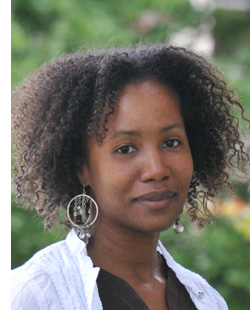OSA member and Stanford assistant professor Audrey Bowden talks with Optics & Photonics News about her path into academia. Thanks to OS A member Brooke Hester for working with Audrey to gather her insights.
A member Brooke Hester for working with Audrey to gather her insights.
What is your background prior to becoming a professor?
My background is pretty typical for someone in my field, but two things stand out. First, my appointments spanned several disciplines. I received my B.S. in electrical engineering, went on to graduate school for my Ph.D. in biomedical engineering, and completed a postdoctoral fellowship in chemistry and chemical biology. Second, I took time off to do other things between career transitions. Before I started my Ph.D., I spent a year teaching math and computer science in the department of infocommunications technology at Ngee Ann Polytechnic in Singapore through the Princeton-in-Asia program. Immediately after completing my degree, I did a year-long fellowship working in public policy as the 2007-8 OSA/SPIE Arthur H. Guenther Congressional Fellow. Although non-traditional, these career choices were very helpful in broadening my skill set and experience.
How did you enter academia?
The beginning of my career was a little unusual in that I was offered a position directly out of graduate school but did not actually begin my work until three years later. It was during that time that I did the policy fellowship and postdoctoral work.
What are your current responsibilities?
I can categorize them into five areas: research, teaching, mentoring, service and administration. Of these, research is the broadest and most difficult to define because my progress is intimately tied with that of my graduate students. Research tasks include writing proposals and papers, conducting experiments, analyzing data and giving talks. Teaching encompasses everything from generating new content for a course to preparing lectures and homework assignments to managing teaching assistants. My mentoring work involves tracking the progress of my graduate students and any other students or mentees to whom I play an advisory role. Service includes any work for university committees, my department or my professional communities. Finally, my administrative responsibilities are day-to-day things such as managing budgets, hiring people, planning travel, ordering equipment, etc.
How does your role differ from the one you had as a grad student or postdoc?
The major differences are the volume of responsibilities and the authority to manage people. As a graduate student, I did some work in all of the areas I just described, but most of it was optional and limited in scope. For example, my decision to serve as student body president meant that I worked on many university committees, but that was a voluntary extracurricular activity. The teaching I did (apart from my work in Singapore) was as a teaching assistant, and I only gave one lecture as a graduate student; I never had to design a new course. Now, I have a much greater number and broader range of tasks that I am expected to do.
Managing people is also very new to me. It takes time to learn to hire the right people, to help students stay on track, and to build a work culture that is consistent with your vision. This last goal is the biggest challenge that I face. I believe that my lab will run much more smoothly if the culture is right. Although it is not always that simple, I make an effort to be systematic in my approach to the work environment so that it is easier for people to connect with and work well in my lab.
What advice would you give to others looking to break into academia?
Develop a clear vision for what you would like to do and begin planning before you start your postdoctoral work. If at all possible, choose a postdoc that will complement your current background, broaden your experience, and allow you to move into a new area.
Audrey Bowden (audrey@ee.stanford.edu) is an assistant professor of electrical engineering in the department of applied physics at Stanford University in Stanford, Calif., USA.
